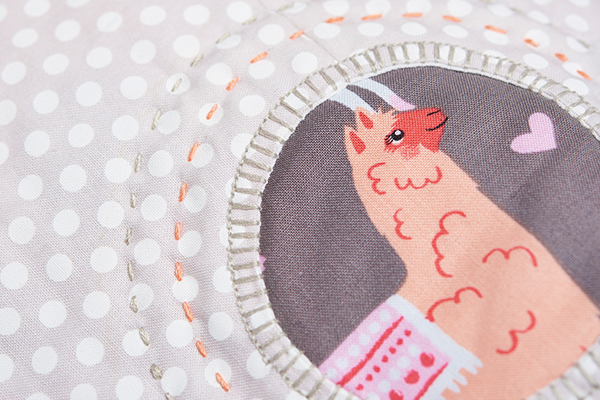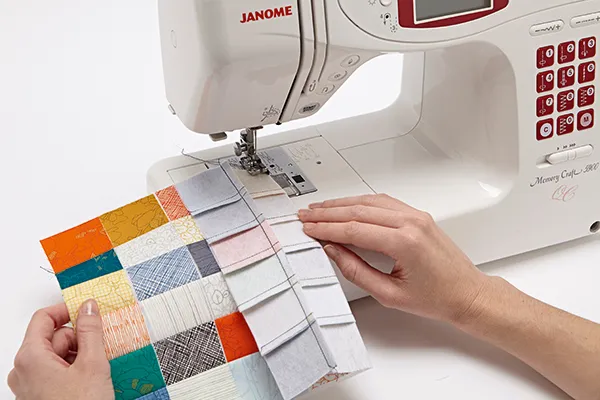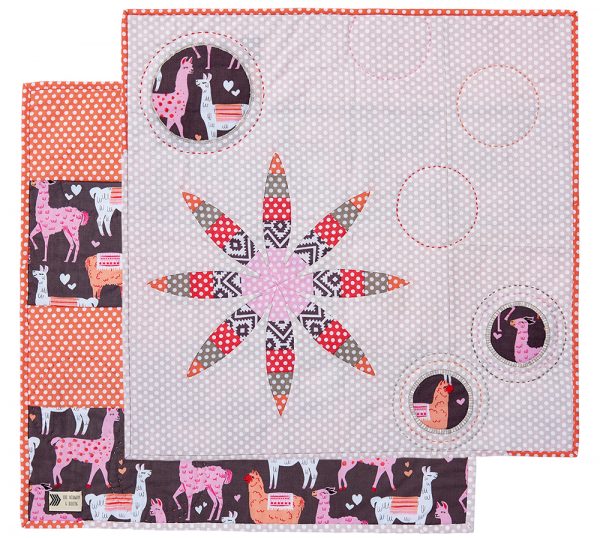Freezer paper appliqué
Step 1
Draw your design on the smooth side of a piece of freezer paper. If you’re using a directional design (like letters), you should trace it in reverse for it to show the right way up once completed. Cut out your design from the freezer paper, and discard the middle section, leaving you with the framed outline. Press this in place on the reverse of your background fabric.
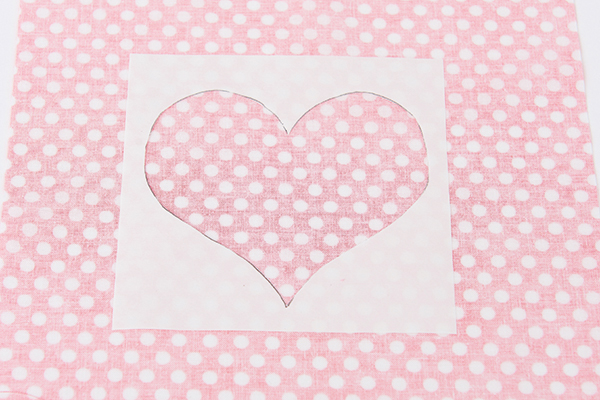
Step 2
Carefully trim the fabric away from the centre of the freezer paper, leaving about ¼in of fabric inside the freezer paper outline. For sharp outer points, clip a straight line in the seam allowance, 1-2 threads away from the point. For inner points, trim straight across the point, as pictured.
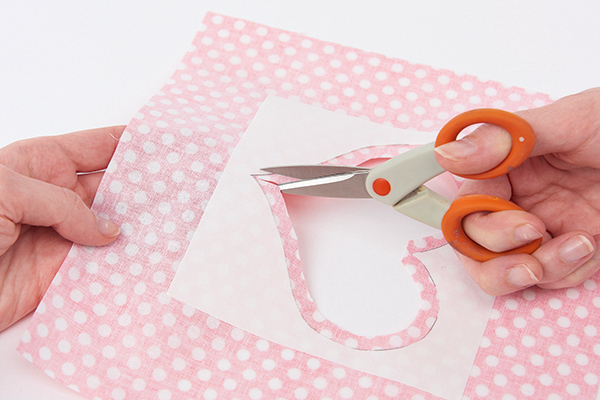
Step 3
Use a small paintbrush to apply starch to the seam allowance along a small section. Fold the seam down over the freezer paper and press with a hot iron. You may find it useful to use a stiletto or pointed pair of tweezers to hold the seam in place and avoid scorching your fingers. Allow your fabric to lie flat while it cools. Once cool, carefully peel away the freezer paper. Your folds should remain in place nicely, but it’s a good idea to give them a final press to make sure they stay put!
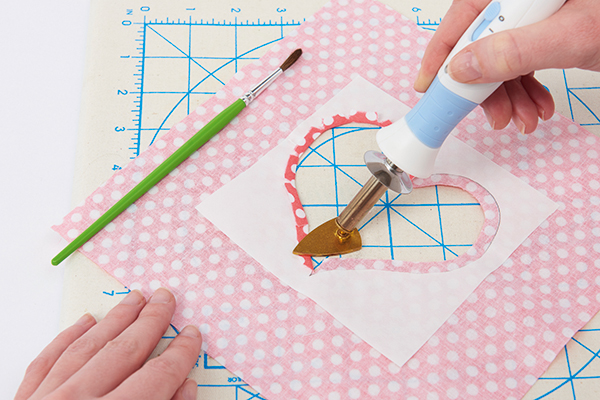
Step 4
Place your background fabric over your print and pin in place. Make sure you get your print centred exactly where you want it under the background fabric. Also make sure both fabrics are lying nice and flat to avoid any distortion. Once you’re happy with the fabric placement, stitch the two fabrics together along the edge of the background fabric. You can stitch by hand, for an invisible finish. Or attach by machine, with your stitch line about 1⁄8in from the edge.
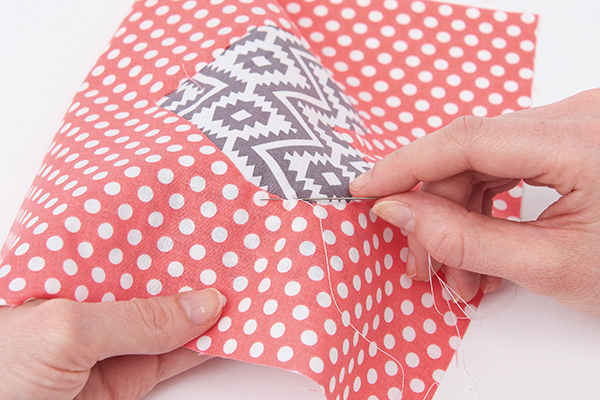
Step 5
Finally, cut away any excess fabric from the reverse. Be careful to cut the print fabric only – without cutting into your background fabric. If you have a pair of appliqué scissors, they’ll come in handy for this last step.
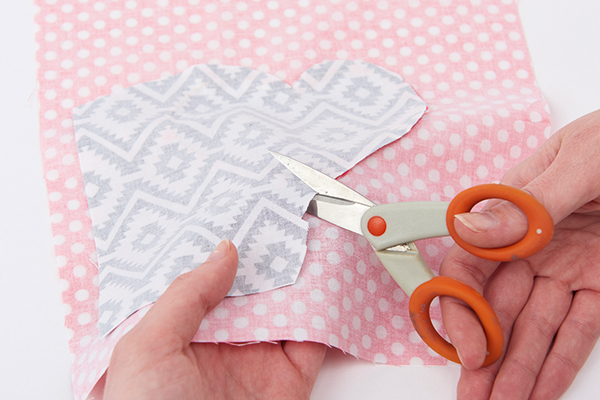
Raw Edge Reverse Appliqué Step by Step
Step 1
For a super-speedy finish with all the charm of reverse appliqué, try this raw edge technique…
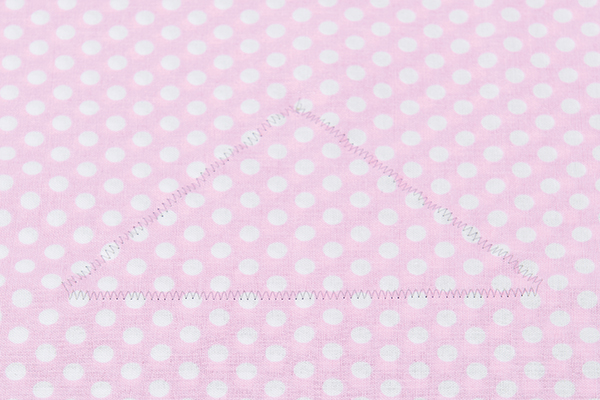
Step 2
Layer your background fabric over your print fabric, both right side up. Use a machine zigzag stitch to make a closed shape, sewing both fabrics together.
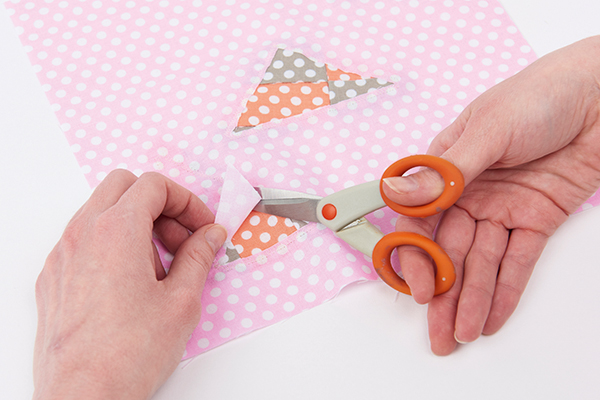
Pinch the top layer to separate from the print below, and carefully cut away the fabric within the stitched area. Cut as close to the stitching as you can, without clipping into the seam. Cut away excess print fabric from the reverse, leaving a ¼in seam allowance. And that’s it! Simple, right?
How to sew peekaboo portholes
Step 1
Use these clever appliqué portholes to showcase a cute fussy cut or to add a little peek at some piecing!
For perfectly turned portholes, draw a circle on a piece of scrap fabric, similar in colour to your background fabric. Place this over your background fabric where you want the porthole to be. Sew all the way around your traced line with a machine stitch. Cut out the centre of the circle, leaving a 1⁄4in seam allowance. Then cut notches into the seam all the way around the circle, taking extra care not to cut into the stitching.
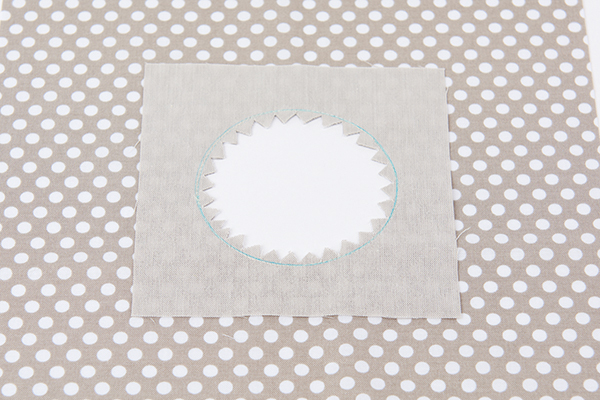
Step 2
Push the scrap fabric through the hole, to the reverse of the background fabric.
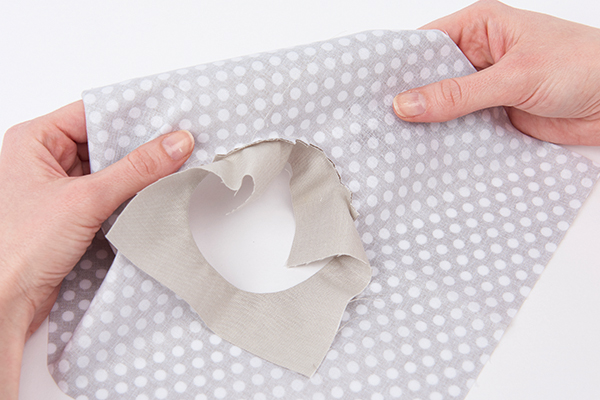
Step 3
Carefully press the seam, creating your porthole. The photo below shows the reverse of our porthole.
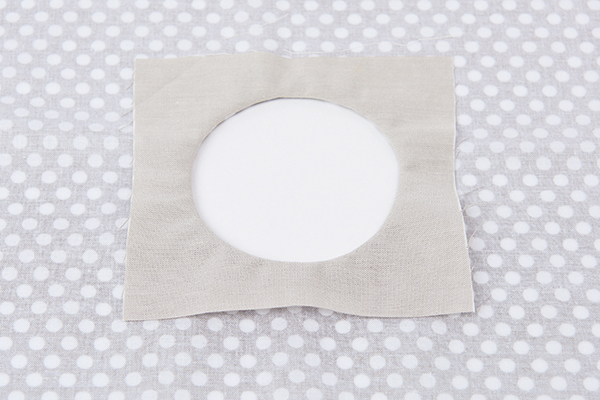
Step 4
Place this porthole over your print fabric, pin and stitch in place by hand or machine. Here we used a machine buttonhole stitch to secure the layers together. Once you’re finished sewing together, trim excess fabric from the back, leaving a 1⁄4in seam allowance.
